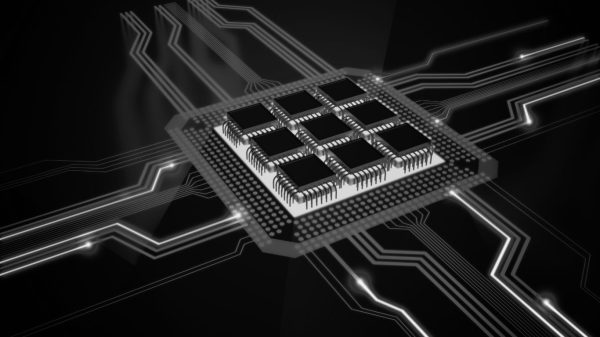Introduction
In today’s hyper-connected world, network infrastructure is the backbone of digital transformation, enabling seamless communication, data exchange, and innovation. Defined as the combination of hardware, software, and protocols that facilitate connectivity, network infrastructure has evolved significantly over the decades, moving from rudimentary frameworks to sophisticated architectures designed to meet the demands of a digital-first economy.
This blog delves into the key components, design principles, and emerging technologies shaping modern network infrastructure. We will also explore best practices for managing these infrastructures, offering actionable insights to future-proof your business operations.
Key Components of Network Infrastructure
Network infrastructure is a synergy of physical, logical, and connectivity components working cohesively to provide robust and scalable communication channels.
Get Our FREE Network Solution Checklist1. Physical Infrastructure
Network Hardware:
Devices such as routers, switches, firewalls, and load balancers form the foundation. Modern advancements like multi-gigabit Ethernet switches and application-aware firewalls ensure superior performance and security. For example, Cisco Catalyst switches are widely used in enterprise setups for their reliability and advanced features.
Cabling Systems:
Cables—copper and fiber optic—are critical in data transmission. While copper cables are economical and suitable for short distances, fiber optics are indispensable for high-speed, long-distance data transfer.
Data Center Considerations:
Data centers host critical resources and require strategic planning regarding cooling systems, physical security, and rack layouts. As edge computing gains traction, micro-data centers are also becoming a crucial part of the ecosystem.
Physical Topology Design:
Choosing the right topology—be it star, mesh, or hybrid—impacts performance and fault tolerance. A mesh topology, for instance, ensures redundancy but comes at a higher cost.
2. Logical Infrastructure
Network Segmentation Strategies:
Segmenting networks into smaller, manageable units enhances security and performance. Techniques like micro-segmentation isolate workloads, mitigating the risk of lateral attacks.
VLAN Configurations:
Virtual Local Area Networks (VLANs) group devices logically, irrespective of their physical location. This not only simplifies management but also optimizes traffic flow.
Routing Protocols:
Protocols such as OSPF, BGP, and EIGRP enable efficient path selection. OSPF is commonly used in enterprise environments because of its scalability and fast convergence.
IP Addressing and Subnetting:
Proper IP planning, including IPv6, is critical to accommodate the exponential growth in connected devices. Subnetting further optimizes IP allocation and reduces broadcast traffic.
3. Connectivity Technologies
Ethernet:
Ethernet remains a cornerstone of network connectivity. Advances like 400Gbps Ethernet support the growing demand for high-speed data transfer in enterprise and cloud networks.
Wi-Fi Technologies:
The introduction of Wi-Fi 6 and Wi-Fi 7 has revolutionized wireless connectivity, offering higher speeds, reduced latency, and improved performance in dense environments.
Software-Defined Networking (SDN):
SDN decouples the control plane from the data plane, enabling centralized management and dynamic resource allocation. Solutions like VMware NSX simplify network automation and scalability.
5G and Emerging Wireless Standards:
5G provides ultra-low latency and high-speed connectivity, making it indispensable for IoT and industrial applications. Future standards like 6G aim to integrate AI natively for adaptive networking.
WAN and Cloud Connectivity:
Technologies like MPLS, SD-WAN, and Direct Connect facilitate secure and optimized connectivity for geographically dispersed enterprises.
Design Principles for Robust Network Infrastructure
Get Our FREE Networking Security ChecklistModern network infrastructure demands careful planning to ensure scalability, performance, reliability, and security.
1. Scalability
- Horizontal vs. Vertical Scaling: Horizontal scaling involves adding more devices, while vertical scaling enhances the capacity of existing ones.
- Modular Design Approaches: Adopting modular designs simplifies future upgrades.
- Capacity Planning Strategies: Tools like SolarWinds Network Performance Monitor help effectively predict and manage resource requirements.
2. Performance Optimization
- Bandwidth Management: Techniques like traffic shaping and deep packet inspection ensure optimal bandwidth utilization.
- Latency Reduction Techniques: Content Delivery Networks (CDNs) and edge computing reduce latency significantly.
- Load Balancing: Distributing traffic across multiple servers improves application performance and prevents overloading.
- Quality of Service (QoS): Prioritizing critical traffic, such as VoIP, ensures smooth operation even under high load.
3. Reliability and Redundancy
- Fault-Tolerant Architectures: Designs like active-active clustering minimize downtime.
- Backup and Failover Mechanisms: Automated failover systems and redundant power supplies ensure uninterrupted service.
- High Availability Design: Leveraging technologies like virtual router redundancy protocol (VRRP) boosts reliability.
Modern Architectural Approaches
Hybrid Infrastructure
Integrating on-premises and cloud resources allows seamless workload distribution. Businesses can optimize costs while maintaining control over sensitive data. Tools like AWS Outposts simplify hybrid deployments.
Zero Trust Network Architecture (ZTNA)
ZTNA emphasizes “never trust, always verify.” By employing micro-segmentation and continuous authentication, businesses can effectively thwart unauthorized access.
Emerging Technologies Impacting Network Infrastructure
AI and Machine Learning
- Predictive Network Maintenance: AI-driven analytics forecast potential failures, reducing downtime.
- Intelligent Traffic Management: Adaptive routing algorithms optimize data flow dynamically.
- Anomaly Detection: Machine learning models identify and mitigate security threats in real-time.
Edge Computing
Edge computing reduces latency by processing data closer to the source. For instance, autonomous vehicles rely heavily on edge networks to make split-second decisions.
Best Practices for Network Infrastructure Management
Get Our FREE Networking Security ChecklistContinuous Monitoring
- Employ tools like Nagios and Zabbix for real-time performance tracking.
- Synthetic monitoring is used to simulate user experiences and detect bottlenecks.
Security Integration
- Implement intrusion detection systems (IDS) and intrusion prevention systems (IPS) to mitigate threats.
- Conduct regular penetration tests to uncover vulnerabilities.
Cost Management
- To evaluate long-term investment viability, perform Total Cost of Ownership (TCO) analyses.
- Compare vendor offerings to secure the best ROI.










